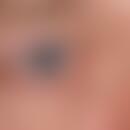Synonym(s)
DefinitionThis section has been translated automatically.
Bacterial genus of the family Micrococcaceae: Gram-positive, irregular-clustered, aerobic, immobile, spherical cocci.
The most common staphylococci are Staphylococcus aureus, S. epidermidis and S. saprophyticus.
Basically and from clinical facial points the staphylococci are divided into:
- Coagulase-positive Staphylococci (main representative = Staphlyococcus aureus)
- Coagulase-negative staphylococci (main representatives = Staphlyococcus epidermidis, S. sparophyticus and about 50 other species)
Occurrence/EpidemiologyThis section has been translated automatically.
You might also be interested in
ClinicThis section has been translated automatically.
Basically, a distinction must be made between diseases caused by the invasive occurrence of staphylococci and those induced by staphylococci toxins.
Localized infections of the skin, skin appendages, urethra.
- Folliculitis
- Boils
- Carbuncle
- Impetigo
- Sweat gland abscess
- suppurative hidradenitis
- mastitis puerperalis
- Wound infections
- Plastic infections (catheters, foreign bodies e.g. joint replacement materials)
- Urinary tract infections (honey moon cystitis caused by S.saphrophyticus; this can adhere to the uroepithelium and can produce a large amount of urease)
Superimposed colonisation in various diseases (e.g. atopic eczema). High (> 80%) colonization density in the nasal mucosa and on weeping areas). Formation of IgG and IgE class antibodies against exfoliative toxins of Staphylococcus aureus.
Furthermore:
- Bacteremia and sepsis as a consequence of local infection
- Endocarditis (second most common germ in bacterial endocarditis)
- Pneumonia (see belowpneumonia)
- Osteomyelitis
- Ostitis
- Staphylococcal Enteritis
Staphylococcal enterocolitis (is caused by the toxins of large amounts of toxin-forming (enterotoxin A-E) staphylococci or by excessive multiplication of staphylococci in the intestine - about 30% of all people are carriers of germs!)
Transitional forms between invasive and staphylococcal toxin-mediated clinical pictures:
- Staphylococcal Scaled Skin Syndrome (SSSS): Infection with Staph. aureus, usually phage type 71, whose exotoxin (exfoliatin) causes the typical exfoliative skin changes.
- Staphylococcal scarlet fever: In older children, the exfoliative skin changes of the "staphylogenic lyell" remain in the exanthema stage. This may be due to partial immunity to protective anti-epidermolysin antibodies.
- Shock syndrome, toxic: A clinical picture with scarlet-like skin symptoms, shock symptoms and multiple organ symptoms caused by the exotoxin TSST-1 produced by certain Staph. aureus strains. Occurs mainly in young women who use tampons.
- Recalcitrant erythematous desquamating disorder (RED) caused by toxin-forming staphylococci recurrent toxin-induced perianal erythema (erythema caused by staphylococci or streptococcal superantigens)
- Recurrent toxin-induced perineal erythema (toxin-induced perineal dermatitis)
- Food poisoning: Diseases caused by the formation of heat-labile enterotoxins (Enterotxoin B, which acts like a superantigen ) with a short incubation period (4-6 hours) with fever, nausea, vomiting and diarrhoea. Mostly self-limited.
TherapyThis section has been translated automatically.
Penicillinase-resistant penicillins, e.g. flucloxacillin (e.g. Stahylex); beta-lactamase inhibitors ( ampicillin sulbactam); carbapenems ( imipenem); cephalosporins ( cefadroxil, cefotaxime, ceftriaxone). Reserve antibiotics include linezolid, tigecycline, quinupristin/dalfopristine.
Poor efficacy: penicillin G, aminopenicillins, tetracyclines, increasingly erythromycin and clindamycin.
Note(s)This section has been translated automatically.
Detection: The pathogen detection must be carried out culturally from suitable test material (blood, wound swab, stool, food residues). For epidemiological studies (especially for MRSA infections) the spa typing is suitable. The gene for protein A is sequenced.
Notice! Increasing problem: MRSA!
- Staphylococcus aureus is held responsible for an exacerbation of atopic eczema. According to a Brazilian study, a narrow band UVB therapy is supposed to significantly reduce the colonization of Staphylococcus aureus on the skin.
- An antibiotic to be applied topically with effectiveness against MRSA is retapamulin (Altargo).
LiteratureThis section has been translated automatically.
- Jokinen E et al (2018) Spa type distribution in MRSA and MSSA bacteremias and association of spa clonal complexes with the clinical characteristics of bacteremia. Eur J Clin Microbiol Infect Dis 37: 937-943.
- Rittenhouse S et al (2006) Selection of retapamulin, a novel pleuromutilin for topical use. Antimicrob Agents Chemother 50:3882-3885
- Silva SH et al (2006) Influence of narrow-band UVB phototherapy on cutaneous microbiota of children with atopic dermatitis. J Eur Acad Dermatol Venereol 20: 1114-1120
Incoming links (19)
Abscess; Bacteriae; Boils; Carbuncle; Caspasen; Cutaneous botryomycosis ; Folliculitis profunda (overview); Grape cocci; Impetigo contagiosa, small vesicles; Kanamycin sulfate; ... Show allOutgoing links (32)
Aminobenzylpenicillins; Ampicillin; Atopic dermatitis (overview); Boils; Carbuncle; Cefadroxil; Cefotaxime; Ceftriaxone; Clindamycin; Erythromycin; ... Show allDisclaimer
Please ask your physician for a reliable diagnosis. This website is only meant as a reference.




